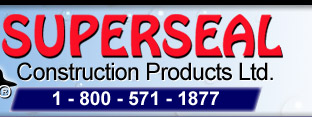|
An insulated concrete form comes a variety of different systems to install them as well as different types of interior cavities. The different types of insulated concrete form wall systems and cavities are:
- Insulated concrete form Block Wall Systems
- Insulated concrete form Panel Wall Systems
- Insulated concrete form Plank Wall Systems
- Insulated concrete form Flat ICF Wall Systems
- Insulated concrete form Waffle Grid ICF Wall Systems
- Insulated concrete form Screen-Grid ICF Wall Systems
- Insulated concrete form Post and Beam Wall Systems
3 Types of Insulated Concrete Form Wall Systems
 An Insulating concrete form price varies from job to job based on the type of form you choose and how you want to construct them.
An Insulating concrete form price varies from job to job based on the type of form you choose and how you want to construct them.
There are 3 classifications for these foam wall systems and they are block, panel and plank wall systems.
Block systems are block wall systems made of ICF blocks have smaller rectangular dimensions that resemble hollowed out masonry units.
Block wall systems have the smallest individual units ranging from 8"x 16" (height X length) to 16" x 4 feet. The typical insulated concrete form block for block wall systems is 10" to 12" in overall width with a 6" to 8" cavity for concrete. The units are factory molded with a special interlocking edge. The blocks arrive onsite ready to stack. The ties are made of metal or plastic and are sometimes already installed in the ICF wall systems.
Insulated Concrete Form Panel Systems are ICF wall systems with large rectangular dimensions.
Insulated Panel systems are the wall systems with the largest units ranging from approximately 1'x8' to 4'x12'. They resemble traditional plywood forms in shape and size. Their foam edges are flat and interconnection requires attachment of a separate connector or tie. Panel wall systems can be shipped flat for assembly on site or assembled into units prior to delivery. The local distributor may do this either on site or at the distribution center.
Concrete Plank systems are insulated concrete form wall systems with narrow but elongated dimensions.
Concrete Plank systems consist of long narrow planks of foam that are held together at a constant distance by metal or plastic ties. The wall systems planks may have notched cut or drilled edges that the ties fit into. The planks are usually 8" to 12" wide and from 4' to 8' in length. Plank wall systems differ from block wall systems in that they can be shipped flat either because the ties can bend or because the ties are to be inserted as the wall systems are being constructed.
The concrete core of the insulated concrete form wall systems is the structural component of insulating concrete form wall systems. Most ICF wall systems knit together with interlocking tongue and groove joints and stack like toy building blocks.
The basic concept is the same for all 3 insulated concrete form wall systems. The wall is insulated on both sides of the foam with reinforced concrete in the center. However, the interiors of the wall systems are different. There are 4 different types of cavities for insulated concrete form wall systems.
- Insulated concrete form flat wall systems
- Insulated concrete form waffle Grid wall systems
- Insulated concrete form screen-Grid wall systems
- Insulated concrete form post and Beam wall systems
| 


